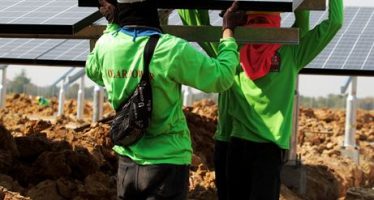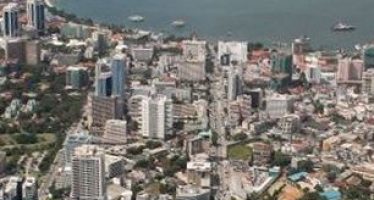Achieving Green Growth in FYR Macedonia
World Bank presents its FYR Macedonia Green Growth Country Assessment

Skopje, Macedonia
The World Bank today presented its FYR Macedonia Green Growth Country Assessment, a report that aims to define the outlines of a green growth path and the initial steps for the country along that path.
According to the World Bank’s recent Inclusive Green Growth: The Pathway to Sustainable Development flagship report, green growth is ‘growth that is efficient in its use of natural resources, clean in that it minimizes pollution and environmental impacts, and resilient in that it accounts for natural hazards and the role of environmental management and natural capital in preventing physical disasters.’
According to the Green Growth Country Assessment presented today, while most countries might agree that such growth is a worthy goal, determining what a green growth path might mean for a particular country is a significant challenge. Green growth can be defined more precisely, as economic growth with more sustainable use of natural resources (minerals, water and clean air, and biodiversity), with proper consideration of mitigation of greenhouse gas emissions; with attention to adaptation to a changing climate; and with more focus on innovation and green jobs to enhance benefits flowing from the technological innovation and new industries spurred by a shift to green growth.
“In Macedonia, the World Bank is doing something special.”
This report takes a practical approach to identifying specific challenges and opportunities FYR Macedonia faces in building its green growth future and presents them in a form useful for decision makers. The report addresses mitigation, adaptation, and the most immediately challenging resource sustainability issue – clean air.
“In Macedonia, the World Bank is doing something special,” says Erika Jorgensen, Task Team Leader of the Program and co-author of the Report. “We are approaching Green Growth in a rather comprehensive way, and developing methodology to understand not what is there today, but thinking what is going to happen in 40 years in the country.”
The Macedonian economy continues to evolve, with ongoing programs of structural reforms to improve growth and competitiveness, and with growing alignment with Europe. The country’s momentum towards Europe is already requiring it to focus more on environmental issues.
This Green Growth Country Assessment for FYR Macedonia defines a green growth path to 2050, focusing on climate action. “For this program with Macedonia, as for most countries, the centerpiece of green growth is climate action,” says the World Bank’s Country Director for Southeast Europe, Ellen Goldstein. “The World Bank firmly believes that climate change is a fundamental threat to development and the fight against poverty.”
According to the report, while addressing today’s economic challenges, policymakers need to keep the long-term in mind, both the likely impact of a changing climate on water, agriculture, and infrastructure, and growing obligations to mitigate greenhouse gas emissions, especially from energy and transport. These considerations are particularly important for decisions on long-lived infrastructure such as power supply, irrigation, or urban streets, water distribution, and sewers. Innovative modeling of water, as a constraint on growth as the climate becomes warmer and drier, quantified the tough tradeoffs that will be needed to balance competing demands from agriculture, the power sector, and municipalities and industry. A greener energy sector demands aggressive energy efficiency measures while bolstering supply security and reducing greenhouse gas emissions.
You may have an interest in also reading…
How Thailand’s Solar Power Visionary Built an Industry with a Boost from IFC
One of the winners of this year’s UN Momentum for Change awards has been transforming Thailand’s renewable energy capacity with
Cube Labs: Transforming Scientific Discovery into Scalable Healthcare Innovation
Italy-based Cube Labs is redefining healthcare venture building by bridging the gap between academic research and global markets—delivering measurable social
Tanzania Could Create Many New Jobs by Harnessing its Rapid Urban Expansion
Tanzania could create large numbers of new, productive jobs for its people, especially young men and women, if policy makers



















































































